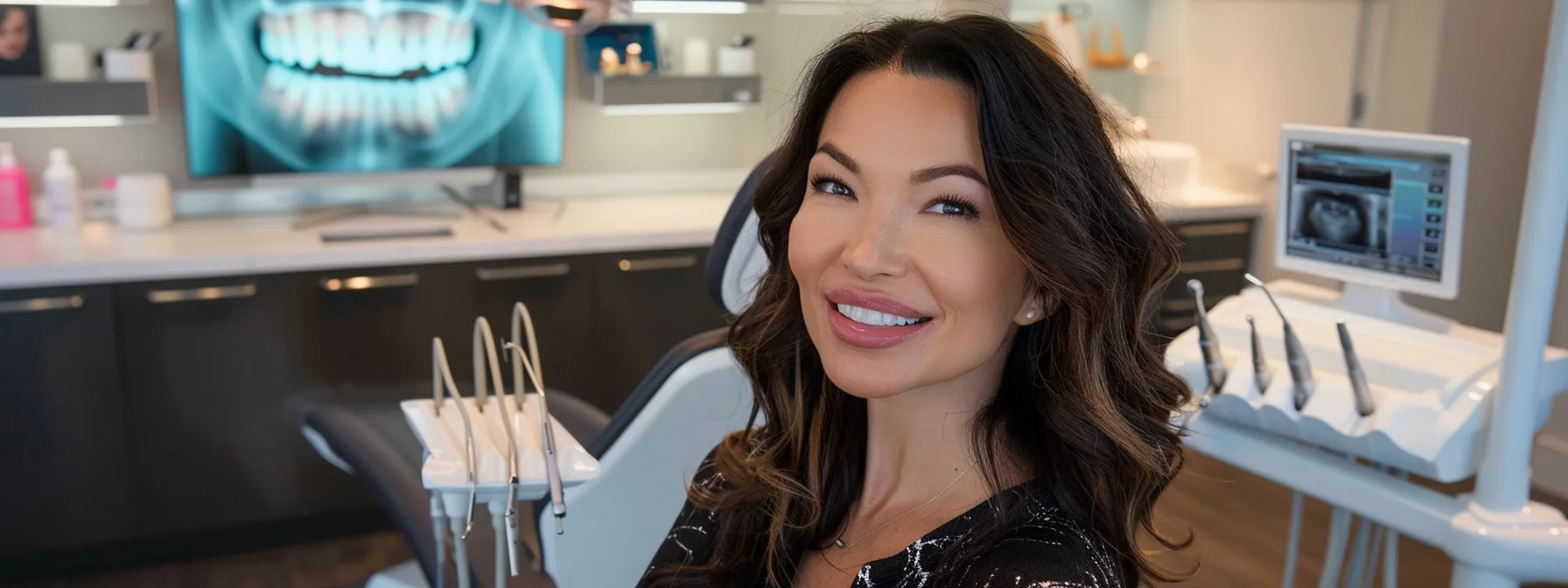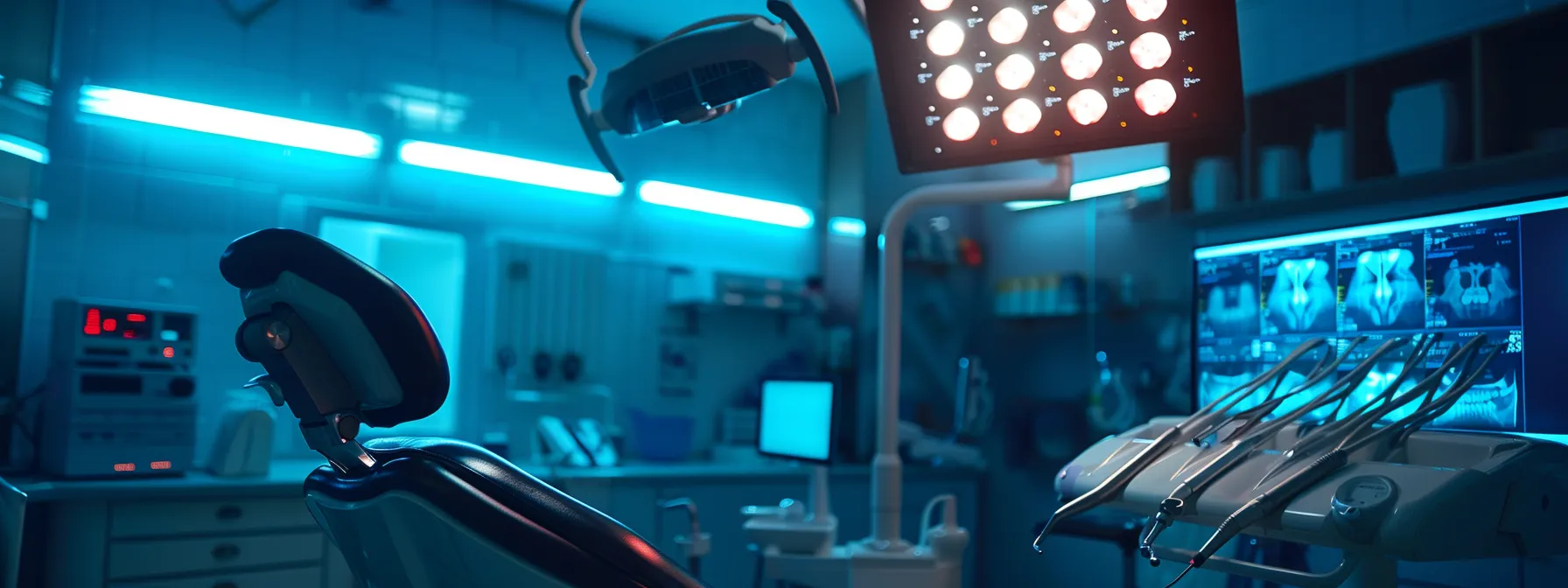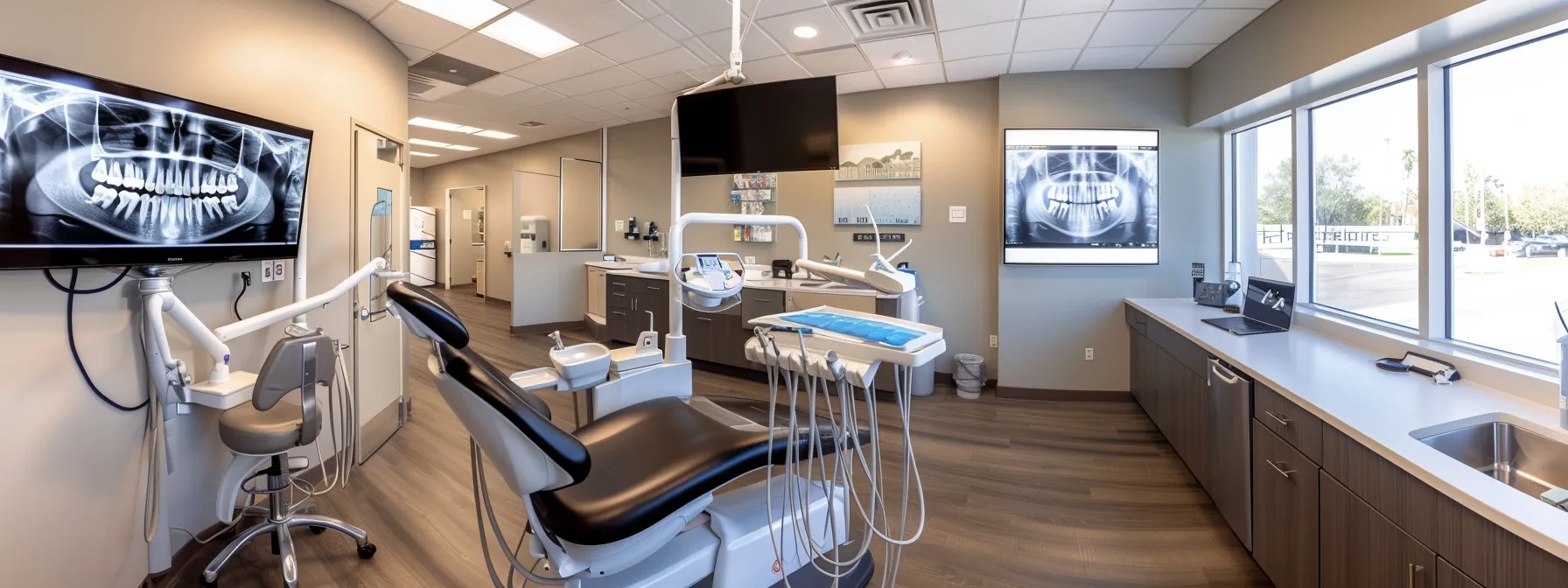Do you know when a toothache becomes an emergency? Severe pain, visible damage, or signs of infection can signal the need for urgent tooth removal. This article will help you identify critical dental issues that require immediate attention. You’ll learn to recognize symptoms that shouldn’t be ignored and understand when to seek emergency care, empowering you to protect your oral health and prevent complications.
Key Takeaways
- Severe tooth pain and persistent discomfort may signal the need for emergency tooth removal
- Visible tooth damage, decay, or discoloration can indicate critical issues requiring prompt dental attention
- Wisdom teeth emergence can cause various complications, often necessitating emergency removal to prevent further problems
- Persistent gum disease and tooth mobility are serious concerns that may lead to emergency extraction
- Regular dental check-ups and proper oral hygiene are crucial for preventing dental emergencies and preserving natural teeth
Identify Severe Pain Signaling Emergency Tooth Removal Need
Severe tooth pain can signal the need for emergency removal. Understanding different types of dental pain, its duration, and accompanying symptoms is crucial. This section explores how to recognize urgent dental issues, including radiating pain, persistent discomfort, and pain when chewing.
It also covers distinguishing between sharp and throbbing sensations, and evaluating related symptoms like swelling or fever. Proper dental hygiene and prompt attention to tooth injuries can help maintain a healthy smile.
Understand Types of Dental Pain Indicating Urgency
Dental pain can manifest in various forms, each indicating different levels of urgency. Sharp, intense pain that persists or worsens over time may signal a need for emergency tooth removal. Family dentistry practices often encounter patients experiencing throbbing sensations, sensitivity to temperature changes, or pain when biting down, which could indicate severe decay or infection requiring immediate attention.
Recognize if Pain Radiates to Surrounding Areas
Dentistry practitioners recognize that pain radiating beyond the affected tooth can indicate a serious issue requiring emergency removal. When discomfort spreads to the jaw, ear, or neck, it often suggests a deep infection or abscess that may have reached the root.
Communities with limited access to dental care, including those relying on Medicaid, should be particularly vigilant about these symptoms and seek prompt attention to prevent further complications.
Assess Pain Duration and Persistence
Dental professionals emphasize the importance of tracking pain duration when assessing the need for emergency tooth removal. Persistent discomfort lasting more than a day or two, especially following dental trauma, often signals a serious issue requiring immediate attention.
In cases where dental cement fails to provide relief or the pain intensifies over time, it’s crucial to seek professional help promptly to prevent potential complications and preserve oral health.
Distinguish Between Sharp and Throbbing Pain
Dr. Kennedy understand the importance of distinguishing between sharp and throbbing pain when assessing the need for emergency tooth removal. Sharp pain often indicates an acute issue, such as a cracked tooth or exposed nerve, while throbbing pain may suggest an infection or inflammation.
Patients experiencing persistent discomfort should consult their dentist promptly, as early intervention can prevent the need for more extensive treatments. Regular teeth cleaning appointments can help maintain oral health and reduce the risk of severe dental issues.
Evaluate Pain When Chewing or Applying Pressure
Dental professionals often advise patients to pay close attention to pain experienced when chewing or applying pressure to teeth. This type of discomfort can indicate serious issues like tooth abscesses or advanced decay, potentially leading to tooth loss if left untreated.
Dentists emphasize that persistent pain during normal biting and chewing activities may signal the need for emergency tooth removal, especially if accompanied by swelling or fever.
Consider Accompanying Symptoms Like Swelling or Fever
Dr. Kennedy stress the importance of monitoring symptoms beyond tooth pain when assessing the need for emergency removal. Swelling in the face, jaw, or gums often indicates an infection that may require immediate attention.
Fever, a sign of systemic infection, coupled with dental pain, signals a potentially serious condition. These symptoms, especially in areas with limited dental accessibility, should prompt swift action to prevent the spread of disease and protect overall health.
Watch for Visible Tooth Damage Requiring Immediate Attention

Visible tooth damage often signals the need for emergency removal. From fractures and severe decay to discoloration and exposed nerves, these signs can indicate critical issues. Our team emphasizes the importance of recognizing these symptoms early. Cosmetic dentistry concerns may also arise from severe damage. Prompt contact with a dental professional can prevent further complications and preserve oral health.
Examine Fractures or Chips in the Tooth Structure
It’s important to stress the importance of examining tooth fractures or chips promptly. These visible damages can expose sensitive inner layers, potentially leading to infection or further decay. Ddentists often recommend swift appointment scheduling for patients with noticeable tooth damage, as timely intervention can prevent the need for more extensive treatments like dental implants.
Look for Signs of Severe Decay Undermining Tooth Health
Dr. Kennedy stresses the importance of recognizing severe decay that can undermine tooth health. Signs like dark spots, visible holes, or persistent sensitivity during cleaning may indicate advanced decay requiring immediate attention. Delta Dental providers often recommend regular check-ups to catch these issues early, as patient feedback suggests early intervention can prevent the need for emergency tooth removal.
Recognize Discoloration as a Sign of Potential Issues
It’s important to emphasize the importance of recognizing tooth discoloration during routine exams. Changes in tooth color, such as darkening or the appearance of gray or black spots, can signal internal damage or decay that may require emergency removal.
Patients with dental insurance should schedule regular check-ups to catch these issues early, as Healthgrades reviews often highlight the value of prompt attention to discoloration in preventing more serious dental problems.
Check for Exposed Nerves Indicating Critical Damage
Exposed nerves in teeth often result from accidents or severe decay, requiring immediate dental care. Dentists typically advise patients to handle such emergencies carefully. If a tooth is knocked out, placing it in milk can help preserve it until professional treatment is received. Exposed nerves cause extreme sensitivity and pain, signaling critical damage that may necessitate emergency tooth removal to prevent further complications.
Identify Broken Roots or Gum Detachment Concerns
Dentists use advanced technology to identify broken roots or gum detachment, which often require emergency tooth removal. These issues can compromise the stability of dental crowns and surrounding structures.
Patients should watch for signs like persistent pain, visible gaps between the tooth and gum, or unusual tooth movement. Prompt evaluation of these symptoms can prevent further complications and inform decisions about necessary treatments.
Discuss Cosmetic Impacts of Severe Tooth Damage
Severe tooth damage can have significant cosmetic impacts, affecting a person’s smile and self-confidence. Dentists often encounter patients concerned about the aesthetic consequences of dental emergencies. bosquecountydentist professionals emphasize that while emergency tooth removal may be necessary for health reasons, it can also lead to changes in jaw structure and facial appearance. Prompt surgery can help minimize these effects and pave the way for cosmetic restoration options:
Monitor Signs of Infection Necessitating Tooth Extraction

Dental infections can necessitate emergency tooth removal. This section explores key indicators such as gum swelling, pus presence, fever, and daily life disruptions. It also examines the urgency of dental abscesses and the connection between oral hygiene and overall health. Understanding these signs is crucial, ensuring timely dental care.
Identify Symptoms Such as Swelling and Redness in Gums
Dr. Kennedy urges patients to watch for swelling and redness in their gums, as these symptoms often signal an infection that may require emergency tooth removal. In some zip codes, particularly those with limited access to dental care, recognizing these signs early can prevent more serious complications.
Schools and Medicare Advantage programs often provide resources to help individuals identify potentially dangerous gum conditions, emphasizing the importance of regular dental check-ups for maintaining oral health.
Assess the Presence of Pus or Foul Odor With Infection
Look for pus or foul odor when suspecting an infection that may require emergency tooth removal. These signs often indicate a severe dental abscess, which can cause intense toothache and potentially spread to other areas.
Be vigilant about unusual tastes or smells in their mouths, as these can signal an infection even before visible symptoms appear. In some cases, infections can compromise the integrity of dental work like veneers, making prompt attention crucial for preserving oral health and preventing more serious complications.
Evaluate Fever as a Severe Indication of Infection Spread
It’s important to monitor your body temperature when dealing with oral infections. A fever often signals that the infection has spread beyond the tooth, requiring immediate attention from a health care provider. Patients experiencing elevated temperatures alongside dental pain should seek prompt therapy to prevent further complications and protect their overall health.
Recognize Challenges With Swelling Disrupting Daily Life
Dental professionals advise patients to be aware of how swelling from tooth infections can disrupt daily life. Severe mouth swelling may interfere with eating, speaking, or breathing, signaling the need for emergency tooth removal.
Patients experiencing difficulties with basic oral functions due to swelling should seek immediate care. Dentists often use gauze to manage bleeding after extraction and may recommend careful cleaning to prevent calculus buildup and further tooth decay. The impact of oral infections on daily activities can include:
- Difficulty eating or drinking
- Impaired speech
- Disrupted sleep patterns
- Reduced ability to concentrate
- Limited social interactions
Discuss the Urgency of Addressing Dental Abscesses
Dental abscess infections can spread rapidly, potentially leading to severe complications that require emergency tooth removal. Doctors in orthodontics emphasize that early intervention often results in higher patient satisfaction and better outcomes. When patients experience symptoms of a dental abscess, such as severe pain or swelling, they should seek immediate dental care to prevent the need for more invasive procedures.
Consider Links Between Untreated Infections and Overall Health
Dental professionals, including Dr. Scott Kennedy, emphasize the connection between oral health and overall well-being. Untreated tooth infections can lead to systemic issues, causing pain that extends beyond the mouth.
Patients experiencing persistent discomfort should consider seeking prompt care, as timely intervention can prevent more serious health complications and potentially save on long-term treatment fees. Regular dental check-ups, including tooth whitening sessions, can help maintain oral health and catch potential infections early.
Recognize Impact of Wisdom Teeth on Dental Health

Wisdom teeth can significantly impact dental health, often requiring emergency removal. This section explores common issues during emergence, jaw pain, crowding, impaction, cyst formation, and preventive measures.
Understanding these factors is crucial for patients. Dental clinics and physicians emphasize the importance of early detection to prevent complications like snoring and maintain overall oral health.
Understand Common Issues From Wisdom Teeth Emergence
Wisdom teeth emergence often brings common issues that may require emergency removal. These issues can include severe pain, infection leading to pus formation, and crowding of existing teeth. Patients should consult their insurance providers about coverage for dental services related to wisdom teeth problems. Early intervention by a trusted local dentist can prevent complications and ensure better oral health outcomes.
Look for Jaw Pain Related to Wisdom Teeth Pressure
Dentists often see patients experiencing jaw pain related to wisdom teeth pressure. This discomfort can signal the need for a root canal or even emergency tooth removal. DDS professionals advise patients to watch for persistent aching in the back of the jaw, which may indicate that wisdom teeth are pushing against neighboring teeth or nerves. Prompt evaluation can help prevent more serious complications and determine if extraction is necessary.
Assess Crowding as a Cause for Potential Tooth Removal
Dental professionals often assess crowding caused by wisdom teeth as a potential reason for emergency tooth removal. When wisdom teeth emerge, they can push against existing teeth, causing misalignment and discomfort. This crowding may lead to various oral health issues, including increased risk of decay and gum disease. Dentists evaluate the severity of crowding through x-rays and physical examinations to determine if extraction is necessary:
Examine if Wisdom Teeth Are Impacted or Partially Erupted
Dr. Kennedy often examines wisdom teeth for impaction or partial eruption, which can necessitate emergency removal. Impacted wisdom teeth, unable to fully emerge due to lack of space, can cause severe pain and infection. Partially erupted teeth create pockets where bacteria thrive, leading to complications. Dentists use X-rays and clinical examinations to assess wisdom teeth position and determine if extraction is necessary. Common signs of problematic wisdom teeth include:
- Persistent pain in the back of the mouth
- Swelling around the jaw
- Difficulty opening the mouth
- Bad breath or unpleasant taste
- Visible gum inflammation near back molars
Recognize Cyst Formation Due to Wisdom Teeth Issues
Dental professionals emphasize the importance of recognizing cyst formation due to wisdom teeth issues. These fluid-filled sacs can develop around impacted wisdom teeth, potentially causing damage to surrounding bone and teeth if left untreated. Regular dental check-ups can help detect cysts early, often through X-rays, before they become symptomatic. Symptoms that may indicate cyst formation include:
- Jaw pain or swelling
- Difficulty opening the mouth
- Changes in bite alignment
- Numbness in the lower lip or chin
- Unexplained tooth sensitivity
Discuss Preventive Measures for Wisdom Tooth Complications
Dental professionals recommend regular check-ups and X-rays to monitor wisdom tooth development and prevent complications. Early detection allows for timely intervention, which can include prophylactic removal before issues arise.
Patients should maintain good oral hygiene, paying special attention to the back molars where wisdom teeth emerge. Some dentists suggest using antiseptic mouthwash to reduce the risk of infection around partially erupted wisdom teeth.
Evaluate Persistent Gum Disease Indicating Extraction Requirement

Persistent gum disease can signal the need for emergency tooth removal. This section explores key indicators like gum inflammation, bleeding, and pocket depth. It examines tooth mobility, the link between gum disease and tooth loss, and how infection advances these issues. Understanding these factors helps patients recognize when gum disease treatment may lead to tooth extraction, ensuring timely dental care.
Identify Signs of Gum Inflammation and Bleeding
Dental professionals stress the importance of recognizing gum inflammation and bleeding as potential indicators for emergency tooth removal. Patients should watch for persistent redness, swelling, or tenderness in their gums, especially if accompanied by frequent bleeding during brushing or flossing.
These symptoms often signal advanced gum disease, which can lead to tooth loss if left untreated. Regular dental check-ups can help catch these issues early, potentially preventing the need for extraction:
Assess Pocket Depth Around Teeth Suggesting Gum Degeneration
Dental professionals use specialized tools to measure the depth of pockets around teeth, which can indicate gum degeneration. Healthy gums typically have shallow pockets of 1-3 mm, while deeper pockets suggest advanced gum disease. Patients with pockets deeper than 5 mm may require more intensive treatment, including possible tooth extraction to prevent further bone loss and infection spread. Regular dental check-ups allow for early detection and intervention, potentially saving teeth from extraction.
Recognize Mobility of Teeth as a Serious Concern
Dental professionals consider tooth mobility a serious concern that may indicate the need for emergency removal. As gum disease progresses, it can weaken the supporting structures around teeth, causing them to become loose.
Patients who notice increasing tooth movement, especially when accompanied by pain or discomfort, should seek immediate dental care. Early intervention can sometimes save affected teeth, but in advanced cases, extraction may be necessary to prevent further oral health complications:
Discuss the Correlation Between Gum Disease and Tooth Loss
Dental professionals emphasize the strong correlation between gum disease and tooth loss. As gum disease progresses, it destroys the supporting structures around teeth, including gum tissue and bone. This deterioration can lead to tooth mobility and eventual loss if left untreated.
Regular dental check-ups and proper oral hygiene are crucial in preventing gum disease and preserving natural teeth. In cases of advanced gum disease, dentists may recommend extraction to prevent further oral health complications and prepare for restorative options.
Evaluate the Role of Infection in Advancing Gum Issues
Dental professionals emphasize the crucial role of infection in advancing gum issues that may lead to emergency tooth removal. When bacteria accumulate in the gum pockets, they can cause inflammation and tissue destruction, accelerating the progression of gum disease.
This process can rapidly compromise tooth stability, potentially necessitating extraction to prevent further oral health complications. Dentists stress the importance of early intervention and proper oral hygiene to combat infection and preserve natural teeth:
- Regular brushing and flossing to remove bacteria
- Professional cleanings to eliminate tartar buildup
- Prompt treatment of gum infections to prevent spread
- Use of antimicrobial mouthwashes as recommended
- Monitoring for signs of infection, such as redness or swelling
Identify How Treatment of Gum Disease May Lead to Removal
Dental professionals explain that treating advanced gum disease can sometimes lead to tooth removal. When deep cleaning and scaling fail to halt the disease’s progression, extraction may become necessary to prevent further bone loss and infection spread. In some cases, removing severely affected teeth allows for more effective treatment of remaining healthy teeth and gums. Dentists carefully evaluate each case to determine if extraction is the best course of action for overall oral health:
Assess Overall Dental Health Indicators for Emergency Action

Assessing overall dental health is crucial for identifying emergency tooth removal needs. This section explores recurrent issues, previous treatments’ impact, systemic health connections, and the importance of regular check-ups. It also examines lifestyle factors affecting dental health and the urgency of addressing severe symptoms. Understanding these indicators helps patients recognize when immediate dental care is necessary.
Look for Recurrent Dental Issues Signaling Deeper Problems
Dental professionals emphasize the importance of monitoring recurrent dental issues as potential indicators for emergency tooth removal. Patients experiencing repeated infections, persistent pain, or frequent need for dental work in the same area should consult their dentist promptly.
These recurring problems often signal underlying issues that may require more intensive treatment, including extraction to prevent further complications and protect overall oral health.
Evaluate How Previous Dental Treatments Affect Current Health
Previous dental treatments can significantly impact current oral health, potentially leading to the need for emergency tooth removal. Dentists often consider a patient’s treatment history when assessing urgent dental issues.
For instance, repeated root canals on the same tooth may indicate underlying problems that could necessitate extraction. Similarly, multiple fillings or crowns on a single tooth might suggest structural weakness, making the tooth more susceptible to infection or fracture.
Understand How Systemic Health Can Impact Dental Conditions
Dental professionals recognize the significant impact systemic health conditions can have on oral health, potentially leading to emergency tooth removal needs. Diseases like diabetes, heart conditions, and autoimmune disorders can affect the body’s ability to fight infections, making teeth more susceptible to decay and gum disease.
Patients with these conditions should maintain regular dental check-ups and inform their dentist of any changes in their overall health status. Early detection and management of systemic health issues can help prevent dental emergencies and preserve natural teeth:
Discuss the Role of Regular Check-Ups in Detecting Emergencies
Regular dental check-ups play a crucial role in detecting potential emergencies before they escalate. During these visits, dentists can spot early signs of decay, infection, or structural issues that might lead to emergency tooth removal if left untreated. Patients who maintain consistent check-up schedules often avoid sudden dental crises, as their oral health is closely monitored and problems are addressed promptly.
Consider Lifestyle Factors Contributing to Dental Health Decline
Dental professionals emphasize that lifestyle factors significantly impact oral health, potentially leading to situations requiring emergency tooth removal. Poor dietary habits, such as frequent consumption of sugary or acidic foods, can accelerate tooth decay and enamel erosion.
Smoking or excessive alcohol use can compromise gum health and increase the risk of oral infections. Stress-related habits like teeth grinding can cause structural damage over time, making teeth more susceptible to fractures or infections that may necessitate urgent extraction.
Recognize the Importance of Immediate Care for Urgent Symptoms
Dental professionals stress the critical importance of seeking immediate care for urgent symptoms that may indicate the need for emergency tooth removal. Severe, persistent pain, significant swelling, or visible infection are clear signs that require prompt attention.
Patients experiencing these symptoms should contact their dentist immediately or seek emergency dental services to prevent potential complications and alleviate discomfort. Timely intervention can often prevent more serious issues and may even save the affected tooth:
- Severe, throbbing pain that doesn’t subside
- Noticeable swelling in the gums or face
- Visible signs of infection, such as pus or abscesses
- Difficulty opening the mouth or swallowing
- Fever accompanying dental pain
Conclusion
Recognizing signs that call for emergency tooth removal is crucial for maintaining optimal oral health and preventing serious complications. From severe pain and visible damage to persistent infections and systemic health impacts, various indicators can signal the urgent need for dental intervention.
Regular check-ups, prompt attention to symptoms, and awareness of personal risk factors play vital roles in identifying and addressing potential dental emergencies. By staying vigilant and seeking timely professional care, individuals can protect their overall well-being and potentially avoid more extensive dental procedures in the future.
Dr. Scott Kennedy and the team at Dynamic Family Dentistry are here to help you achieve the bright, confident smile you’ve always wanted. Book a consultation today to learn more about dental emergencies in Clifton, TX, and take the first step toward a radiant smile!
Dynamic Family Dentistry
302 S. Avenue Q, Clifton, Texas
Phone: (254) 675-3518
Related Articles
Dental Emergency, Understanding Emergency Root Canals, Emergency Extractions, Protection During Dental Emergencies, Lost a Filling or Crown Tips, What’s an Emergency Dentist


